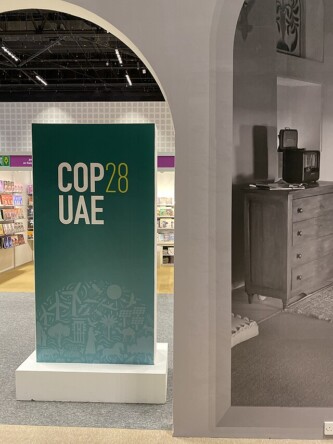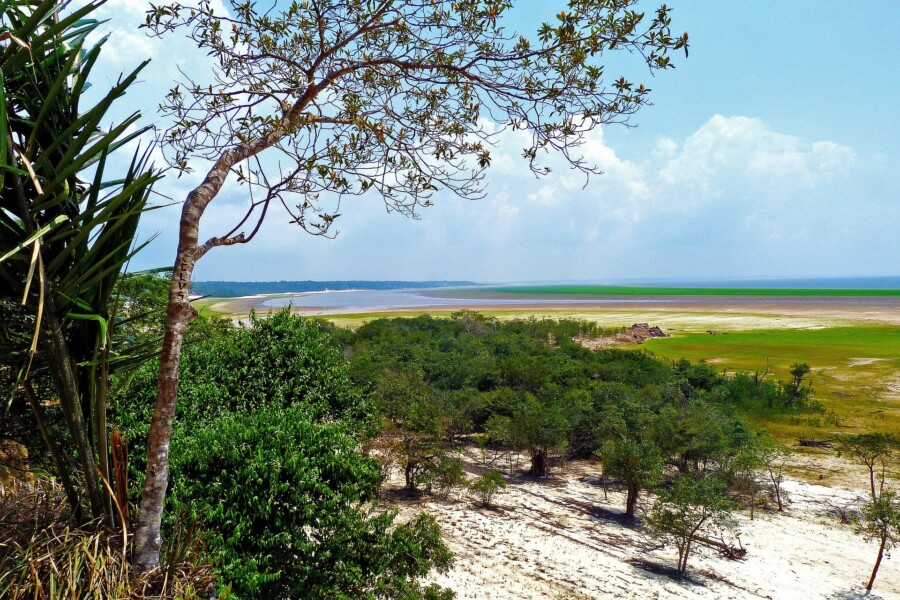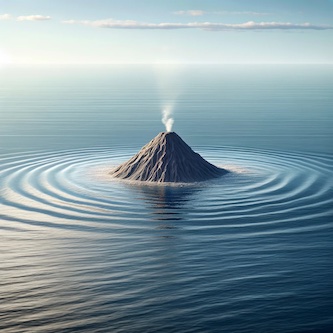England’s government has added 27 new places where people can swim in nature. This is the biggest increase ever for wild swimming spots in the country. But just because a place is officially a swimming spot doesn’t mean the water is clean. Two rivers on the list are already rated as “Poor” because of problems like sewage and farms.
Last year, most swimming spots in England met the basic clean water rules. However, fewer places were rated as “Excellent” and more were rated as “Poor” than before. The Environment Agency checks the water quality at these spots during the swimming season and shares the results online. If a spot is rated “Poor” for five years in a row, it loses its special status and regular checks.
People who care about clean water say progress is slow. For example, Wolvercote Mill Stream in Oxford has been rated “Poor” since it was added two years ago. But being on the list has brought more attention and promises to fix the water quality. If these places keep getting “Poor” ratings, they might lose their special status and regular checks.
Original news source: 27 new wild swimming sites for England – but are they clean? (BBC)
🎧 Listen:
Slow
Normal
Fast
📖 Vocabulary:
| 1 | officially | In a way that is approved by an authority |
| 2 | sewage | Waste water and other dirty stuff that comes from homes and factories |
| 3 | rated | Given a score or grade |
| 4 | progress | Moving forward or getting better |
| 5 | quality | How good or bad something is |
| 6 | status | The position or rank of something |
| 7 | environment | The natural world around us |
| 8 | agency | An organization or group that does a specific job |
| 9 | promises | Assurances or commitments to do something |
| 10 | attention | Focus or notice from people |
| 11 | increase | Becoming larger or more in number |
| 12 | swimming | Moving through water by using your arms and legs |
Group or Classroom Activities
Warm-up Activities:
– News Summary
Instructions: In pairs or small groups, students will read the article and then write a summary of the main points. They should focus on the increase in wild swimming spots in England, the water quality issues, and the potential consequences for spots rated as “Poor.”
– Vocabulary Pictionary
Instructions: Divide the class into two teams. Give each team a list of vocabulary words from the article (e.g. wild swimming, clean water, sewage, farms). One person from each team will come to the front of the class and draw a picture to represent one of the words. The team must guess the word within a certain time limit. The team with the most correct guesses wins.
– Pros and Cons
Instructions: In pairs or small groups, students will discuss the pros and cons of wild swimming. They can use the information from the article to support their arguments. After a few minutes, groups can share their thoughts with the class.
– Think-Pair-Share
Instructions: Ask students to think about the following question: “What are some ways we can help improve water quality in swimming spots?” After a few minutes, students can pair up and discuss their ideas. Finally, groups can share their ideas with the class.
– Future Predictions
Instructions: In pairs or small groups, students will imagine the future of wild swimming in England. They should discuss what they think will happen to the number of swimming spots, the water quality, and the government’s actions. Each group can present their predictions to the class.
🤔 Comprehension Questions:
1. What did the government of England do to increase the number of places where people can swim in nature?
2. Does being an official swimming spot mean that the water is clean?
3. Why are two rivers on the list rated as “Poor”?
4. Were most swimming spots in England meeting the clean water rules last year?
5. What does the Environment Agency do to check the water quality at swimming spots?
6. What happens to a spot if it is rated “Poor” for five years in a row?
7. Why do people who care about clean water think progress is slow?
Go to answers ⇩
🎧✍️ Listen and Fill in the Gaps:
England’s (1)______ has added 27 new places where people can swim in nature. This is the (2)______ increase ever for (3)______ swimming spots in the country. But just because a place is officially a swimming spot doesn’t mean the water is clean. Two rivers on the list are already rated as “Poor” because of problems like sewage and farms.
Last year, (4)______ swimming spots in (5)______ met the basic clean water rules. However, fewer places were rated as “Excellent” and more were rated as “Poor” than before. The (6)______ Agency checks the water (7)______ at these spots during the swimming season and shares the results online. If a spot is rated “Poor” for five years in a row, it loses its special status and regular (8)______.
People who care about clean water say (9)______ is slow. For example, Wolvercote Mill Stream in Oxford has been rated “Poor” since it was added two years ago. But being on the list has brought more attention and promises to fix the (10)______ quality. If these places keep getting “Poor” ratings, they might lose their special (11)______ and (12)______ checks.
Go to answers ⇩
💬 Discussion Questions:
Students can ask a partner these questions, or discuss them as a group.
1. What is wild swimming?
2. How would you feel if you went swimming in a place with dirty water?
3. Do you like swimming in nature or in a swimming pool? Why or why not?
4. What do you think about the government adding more places for people to swim in nature?
5. How do you think the government can improve the water quality in the swimming spots?
6. Have you ever been to a swimming spot in nature? How was your experience?
7. Do you think it’s important to have clean water in swimming spots? Why or why not?
8. What do you think the Environment Agency should do if a spot is rated “Poor” for five years in a row?
9. How do you think adding a place to the list of swimming spots can help improve the water quality?
10. Why do you think some swimming spots have more attention and promises to fix the water quality?
11. Do you think it’s fair for a swimming spot to lose its special status and regular checks if it gets a “Poor” rating for five years in a row?
12. What can you do to help keep swimming spots in nature clean?
Individual Activities
📖💭 Vocabulary Meanings:
Match each word to its meaning.
Words:
1. officially
2. sewage
3. rated
4. progress
5. quality
6. status
7. environment
8. agency
9. promises
10. attention
11. increase
12. swimming
Meanings:
(A) The position or rank of something
(B) How good or bad something is
(C) An organization or group that does a specific job
(D) Waste water and other dirty stuff that comes from homes and factories
(E) Given a score or grade
(F) Assurances or commitments to do something
(G) In a way that is approved by an authority
(H) Moving forward or getting better
(I) Moving through water by using your arms and legs
(J) The natural world around us
(K) Focus or notice from people
(L) Becoming larger or more in number
Go to answers ⇩
🔡 Multiple Choice Questions:
1. What has the government of England done?
(a) Added 27 new places for swimming in nature
(b) Closed all swimming spots in the country
(c) Reduced the number of swimming spots in the country
(d) Increased the number of swimming pools in the country
2. What does it mean if a place is officially a swimming spot?
(a) The water is always clean
(b) The water is always dirty
(c) It doesn’t necessarily mean the water is clean
(d) The water is always safe to swim in
3. Why are two rivers on the list rated as “Poor”?
(a) Because they are the cleanest rivers in the country
(b) Because of problems like sewage and farms
(c) Because they are the biggest rivers in the country
(d) Because they have the most swimming spots
4. What happened to the number of swimming spots rated as “Excellent” last year?
(a) Fewer places were rated as “Excellent”
(b) More places were rated as “Excellent”
(c) The number stayed the same
(d) There were no swimming spots rated as “Excellent”
5. Who checks the water quality at these swimming spots?
(a) The government of England
(b) The swimming spot owners
(c) The local residents
(d) The Environment Agency
6. What happens if a swimming spot is rated “Poor” for five years in a row?
(a) It becomes a popular tourist spot
(b) It gets more attention and promises to fix the water quality
(c) It gets a higher rating
(d) It loses its special status and regular checks
7. What has happened to Wolvercote Mill Stream in Oxford since it was added to the list?
(a) It has been rated “Excellent”
(b) It has been closed for swimming
(c) It has been rated “Poor”
(d) It has become a popular swimming spot
8. What might happen if places keep getting “Poor” ratings?
(a) They might become cleaner
(b) They might lose their special status and regular checks
(c) They might become more popular for swimming
(d) They might get more attention and promises to fix the water quality
Go to answers ⇩
🕵️ True or False Questions:
1. Last year, most swimming spots in England followed the basic clean water rules.
2. The Environment Agency does not check the water quality at these spots during the swimming season and does not share the results online.
3. The government of England has added 27 new places where people can swim in nature.
4. Some places on the list have been rated as “Poor” for a long time, but being on the list has brought attention and promises to improve the water quality.
5. However, there were more places rated as “Excellent” and fewer places rated as “Poor” than before.
6. If a swimming spot is rated “Excellent” for five years in a row, it will keep its special status and regular checks.
7. This is the biggest increase ever for wild swimming spots in the country.
8. None of the new swimming spots have dirty water because of problems like sewage and farms.
Go to answers ⇩
📝 Write a Summary:
Write a summary of this news article in two sentences.
Check your writing now with the best free AI for English writing!
Writing Questions:
Answer the following questions. Write as much as you can for each answer.
Check your answers with our free English writing assistant!
1. What is the biggest increase ever for wild swimming spots in England?
2. Does being an official swimming spot mean the water is always clean?
3. What are two problems that can make a river’s water quality “Poor”?
4. Were there more swimming spots rated as “Excellent” or “Poor” last year?
5. What happens if a swimming spot is rated “Poor” for five years in a row?
✅ Answers
🤔✅ Comprehension Question Answers:
1. The government of England added 27 new places where people can swim in nature.
2. No, being an official swimming spot doesn’t mean that the water is clean.
3. The two rivers on the list are rated as “Poor” because of problems like sewage and farms.
4. No, last year fewer swimming spots in England were rated as “Excellent” and more were rated as “Poor” than before.
5. The Environment Agency checks the water quality at swimming spots during the swimming season and shares the results online.
6. If a spot is rated “Poor” for five years in a row, it loses its special status and regular checks.
7. People who care about clean water think progress is slow because some spots that have been rated “Poor” for years still haven’t improved their water quality.
Go back to questions ⇧
🎧✍️✅ Listen and Fill in the Gaps Answers:
(1) government
(2) biggest
(3) wild
(4) most
(5) England
(6) Environment
(7) quality
(8) checks
(9) progress
(10) water
(11) status
(12) regular
Go back to questions ⇧
📖💭✅ Vocabulary Meanings Answers:
1. officially
Answer: (G) In a way that is approved by an authority
2. sewage
Answer: (D) Waste water and other dirty stuff that comes from homes and factories
3. rated
Answer: (E) Given a score or grade
4. progress
Answer: (H) Moving forward or getting better
5. quality
Answer: (B) How good or bad something is
6. status
Answer: (A) The position or rank of something
7. environment
Answer: (J) The natural world around us
8. agency
Answer: (C) An organization or group that does a specific job
9. promises
Answer: (F) Assurances or commitments to do something
10. attention
Answer: (K) Focus or notice from people
11. increase
Answer: (L) Becoming larger or more in number
12. swimming
Answer: (I) Moving through water by using your arms and legs
Go back to questions ⇧
🔡✅ Multiple Choice Answers:
1. What has the government of England done?
Answer: (a) Added 27 new places for swimming in nature
2. What does it mean if a place is officially a swimming spot?
Answer: (c) It doesn’t necessarily mean the water is clean
3. Why are two rivers on the list rated as “Poor”?
Answer: (b) Because of problems like sewage and farms
4. What happened to the number of swimming spots rated as “Excellent” last year?
Answer: (a) Fewer places were rated as “Excellent”
5. Who checks the water quality at these swimming spots?
Answer: (d) The Environment Agency
6. What happens if a swimming spot is rated “Poor” for five years in a row?
Answer: (d) It loses its special status and regular checks
7. What has happened to Wolvercote Mill Stream in Oxford since it was added to the list?
Answer: (c) It has been rated “Poor”
8. What might happen if places keep getting “Poor” ratings?
Answer: (b) They might lose their special status and regular checks
Go back to questions ⇧
🕵️✅ True or False Answers:
1. Last year, most swimming spots in England followed the basic clean water rules. (Answer: True)
2. The Environment Agency does not check the water quality at these spots during the swimming season and does not share the results online. (Answer: False)
3. The government of England has added 27 new places where people can swim in nature. (Answer: True)
4. Some places on the list have been rated as “Poor” for a long time, but being on the list has brought attention and promises to improve the water quality. (Answer: True)
5. However, there were more places rated as “Excellent” and fewer places rated as “Poor” than before. (Answer: False)
6. If a swimming spot is rated “Excellent” for five years in a row, it will keep its special status and regular checks. (Answer: False)
7. This is the biggest increase ever for wild swimming spots in the country. (Answer: True)
8. None of the new swimming spots have dirty water because of problems like sewage and farms. (Answer: False)
Go back to questions ⇧













